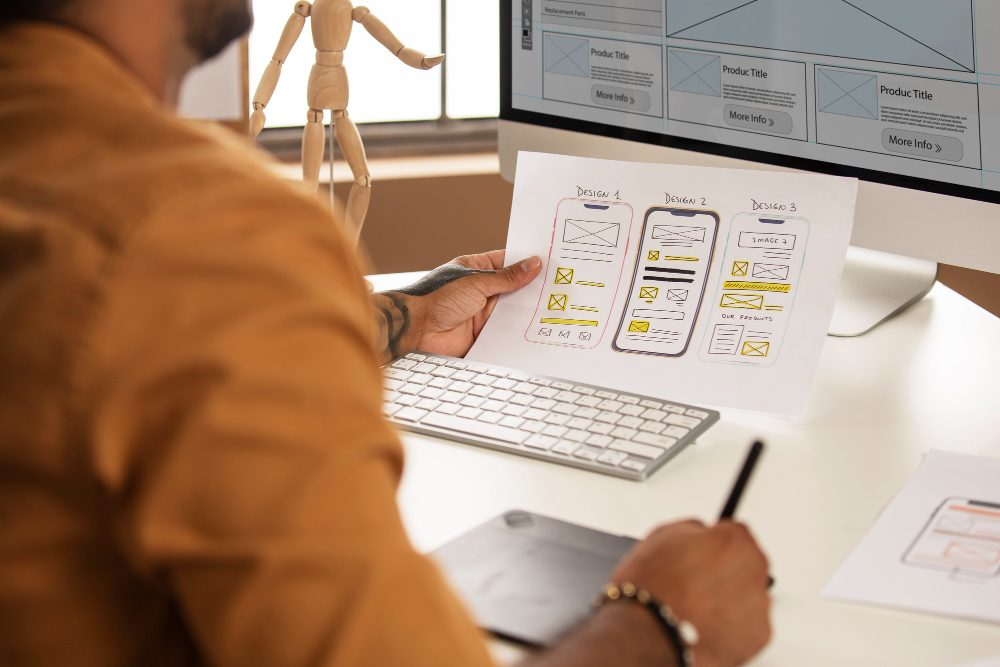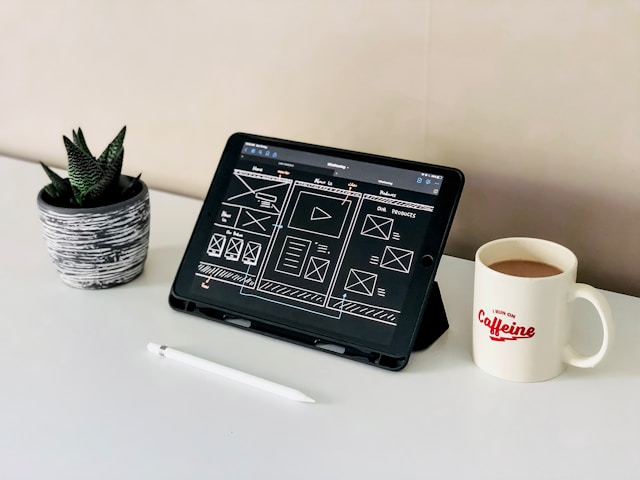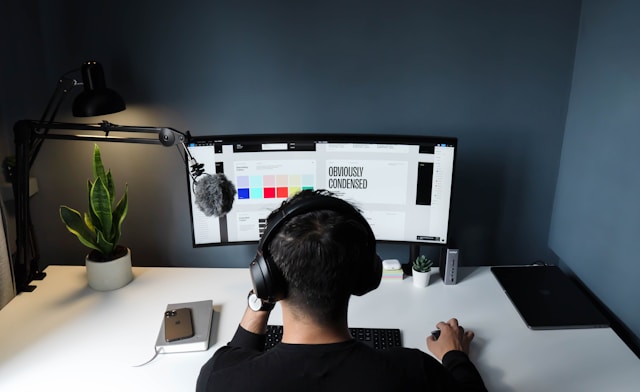For those interested in human-computer interaction, you must understand important internal relationships that affect the UX design process.
Unsurprisingly, one of the most influential relationships within the design process exists between UX design and UX research. This relationship has the most influence over the quality of the user’s experience, combining valuable user-centric insight with functional design.
For this reason, it’s essential that you understand the ins and outs of both UX roles. Only by understanding both roles, respectively, can you continue to refine the user’s experience.
In today’s guide, we shall address the UX researcher vs UX designer debate to help you achieve that goal. We’ll explore the crucial definitions, differences, and similarities between UX research and UX design, including salary comparisons. By the time you’ve finished reading, you’ll have a deep understanding of the dynamic between UX designers and UX researchers.
What Is UX Design?
UX design refers to the process of utilizing valuable insights from UX research to create engaging, functional, and empathic products. Ultimately, the foundation of UX design pertains to catering to the needs, desires, goals, and pain points of target users.
The UX design process is iterative by nature. It’s a process that combines user research, market research, and product development to craft meaningful digital experiences.
Here are some of the crucial components of a digital product that UX design aims to optimize:
- Branding, with a particular attentiveness when it comes to adhering to a brand’s design and values.
- Usability, with the goal of making a digital product as easy to use for the user as possible.
- Visual design, with the intent to collaborate with UI designers to create intuitive, navigable user interfaces.
- Function, with the understanding that any design should exhibit functionality and satisfy its intended purposes to help users achieve goals.
- User-centricity, with regard to every interaction the user has with a digital product. This includes the entirety of the user’s journey, starting with how you introduce the product to the user.
The most important thing to understand about UX design is that UX design aims to resolve a user’s problem.
Tip: Don’t follow the misconception that UX design and interaction design are the same thing. UX design focuses on every design element that affects the experience a user has while interacting with a digital product. Interaction design, on the other hand, focuses on ensuring interactive design elements function properly to help users achieve their goals.

What Is UX Research?
We can’t address UX design without also addressing the meaning of UX research.
So, what is UX research?
The UX research process involves utilizing an array of user research methods to acquire insights about a product’s target audience. UX research serves as a means to understanding users to a psychological degree, discovering what said users need and want. Beyond users’ needs and desires, UX research elucidates what users do/say and why they say/do them.
These insights, combined with realistic contexts – typically in the form of user personas – enhance the design process of digital products.
You can break UX research into the following six methodologies:
1. Qualitative Research
A combination of qualitative and quantitative insights largely dominates UX research.
UX researchers collect qualitative insights, a non-numerical source of data, to reveal why users say/do what they say/do. The goal of qualitative research is to understand particular concepts, opinions, and experiences that relate to their target users. In other words, it’s a humanistic approach to identifying and analyzing subjectivity within the users’ responses. If you conducted qualitative research techniques like user interviews or focus groups, you should probe your participants for deeper insight.
2. Quantitative Research
Expectedly, as a contrasting research methodology, quantitative research aims to generate numerical data for analysis. Quantitative research aims to uncover what users say/do. Quantitative research can unveil correlations in the user’s experience and validate or invalidate your initial hypothesis regarding said user experience.
No matter what findings you generate from quantitative research methods, you will generalize those findings to explain a particular phenomenon. If you wanted to find quantitative data, you would utilize research techniques like user surveys and A/B testing.

3. Generative Research
Much like qualitative research, generative research enables UX researchers to identify target users’ behaviors, motivations, and pain points. Where generative research differs from qualitative research concerns the goals behind the research.
Generative research is exploratory, meaning that you’d utilize this research methodology to identify the problem statement. By employing generative research, you can familiarize yourself with your users’ mental models. You can then learn more about how they’ve tried to resolve their pain points. Ultimately, the data from generative research focuses on identifying the users’ frustrations and how to fix them. To acquire generative insights, you could conduct concept testing or card sorting sessions.
4. Evaluative Research
Evaluative research happens after a UX researcher formulates a problem statement and potential design solution. UX researchers use evaluative research methods to assess a product or concept. As a result, the data that evaluative research generates helps to refine the prospective design solution. To reveal evaluative data, you could conduct five-second testing and tree-testing sessions.

5. Attitudinal Research
UX researchers use attitudinal research to unveil their users’ beliefs, opinions, perceptions, and expectations with regard to a product. Attitudinal research relies heavily on self-reported data to understand what users say about their beliefs and opinions. You should use research techniques like diary studies and user surveys.

6. Behavioral Research
Behavioral research, as its name suggests, focuses on the user’s behavior and actions as they interact with a product. With behavioral research, you can observe your target users in real-time to acquire realistic findings about the user’s experience. You can use observational techniques like eye-tracking studies and usability tests to validate or invalidate your design hypothesis.
Overall, UX research methodologies and practices provide designers with the information they need to empathize and prioritize the user.
A Typical UX Designer Job Description
Of course, depending on where a designer works, their daily duties may vary slightly.
However, there are a few responsibilities of a UX designer that won’t fluctuate between companies and brands.
Below, we’ve explored the typical UX designer job description so that you know what to expect from the role.
- They must understand their company’s objectives, utilizing them as a guideline for design projects.
- They must display competencies relating to conducting user research and analyzing user research data. In the same vein, UX designers must then know how to create user personas using data from UX research.
- They must understand and apply UX design principles to the design process for every digital product.
- They must conduct concept and usability testing methods and gather feedback relating to the product’s functionality.
- They must exercise their creativity and empathy to come up with design solutions that solve their users’ problems.
- They must work alongside UI designers and UX writers to implement navigable and visually appealing UI designs.
- They must know how to develop wireframes and prototypes.
- They must know how to use UX design tools like Figma and Sketch.
- They must collaborate with product developers, sharing their solutions and prototypes.
- They must keep up to date with the latest UX design trends.
- They must continuously refine their designs using feedback from users, stakeholders, and fellow designers.

A Typical UX Researcher Job Description
You know the daily tasks and responsibilities of a UX designer; it’s time to shift your focus to UX researchers.
Similar to how we’ve explored the job description for UX designers, we’ll now investigate the duties of a UX researcher.
By knowing the differences in responsibilities between designers and researchers, you can visualize the harmony between said roles. With this in mind, here are the typical day-to-day tasks of a UX researcher.
- They must create research plans that contain essential information. This information relates to the brand’s objectives. The research plan should also include the project’s timeline, scope, expectations, goals, and necessary research methods.
- They must collaborate with marketing and product development teams to design appropriate research studies.
- They must know how to interview stakeholders and clients.
- They must recruit participants that accurately reflect their target audience.
- They must know which research methodologies and techniques to use to generate relevant data.
- They must then know how to conduct said research techniques and how to guide participants through the process.
- They must unify oppositional research methodologies, like qualitative and quantitative research, to drive crucial design decisions.
- They must exhibit an understanding of UX design basics, including the principles that UX designers adhere to.
- They must know how to present their findings effectively in order to simplify communication across design teams.

UX Researcher vs UX Designer: Salary
Another important distinction between the two UX roles boils down to annual salaries.
Let’s take a look at the financial side of the debate between UX researchers vs UX designers: salaries.
An Entry-Level UX Designer Salary
An entry-level UX designer in the USA will earn an average salary of $70,310 per year. However, it’s worth noting that an entry-level UX designer can earn anywhere between $59,000 to $96,000 per year.
An Entry-Level UX Researcher Salary
An entry-level UX researcher in the USA will earn an average salary of $71,050 per year.
Take into account that an entry-level UX researcher can earn anywhere between $66,000 and $101,000 per year.
Note: These figures come from designers and researchers with at most one year of experience.
UX Researchers and UX Designers: Where the Two UX Roles Meet
We’ve focused heavily on how the two UX roles diverge from one another. However, it’s equally as important to discuss where the two converge.
By now, you know that communication and collaboration between designers and researchers are essential when creating successful products. The user-oriented insights that UX researchers collect and analyze directly serve as the blueprints of a digital product. UX designers will then expand on these blueprints, utilizing a UX researcher’s findings to optimize the user-centricity of a product.
Both roles include iterative reflection and refinement to ensure that the finalized product meets the user’s expectations.
What’s more, although a UX designer’s skills and a UX researcher’s vary greatly, they complement each other effectively during collaborations. Through consistent meetings, brainstorming sessions, and feedback sessions, designers and researchers can share valuable insights. A UX researcher can combine their knowledge of the target audience with a UX designer’s knowledge of human-computer interaction.
Ultimately, when user research data translates effectively into empathic design decisions, both UX researchers and UX designers satisfy their goals. As a result, the user can access and enjoy a seamless digital experience that caters to their needs.
UX Researcher vs UX Designer: A Collaborative, User-Centric Design Process
Hopefully, what you’ve taken away from this article is that UX designers and UX researchers share an equal importance. You can’t have one without the other, and when effectively combined, they can create seamless, helpful, and compelling user experiences.
So whether your preferences align more with UX design or UX research, you must have a clear understanding of both. Only by acquainting yourself with UX design and UX research can you go on to create digital experiences. What’s more, by knowing the ins and outs of both roles, you can ensure that your designs exhibit user-centricity.
User-centricity is the most important quality of any digital product, and, given its importance, you’ll need some inspiration. This is where Page Flows enters the picture.
Page Flows offers an abundance of inspiration when it comes to vital user flows. From onboarding to analytics and stats, Page Flows’s library flaunts over 4,800 tried and tested products. We work with esteemed brands like Spotify and Slack, collecting emails as we record user flows. Our goal is simple – to help you help your users enjoy a seamless digital experience.
When it comes to the UX researcher vs UX designer comparison, we say, ‘Why not the best of both?’ With Page Flows, you’ll see how well-informed user research combines with creative UX design perfectly.
Get started today to access our ever-evolving library of user flow recordings. With Page Flows, you can rest assured that you have an endless source of inspiration. Keeping up to date with current design trends has never felt so effortless!





